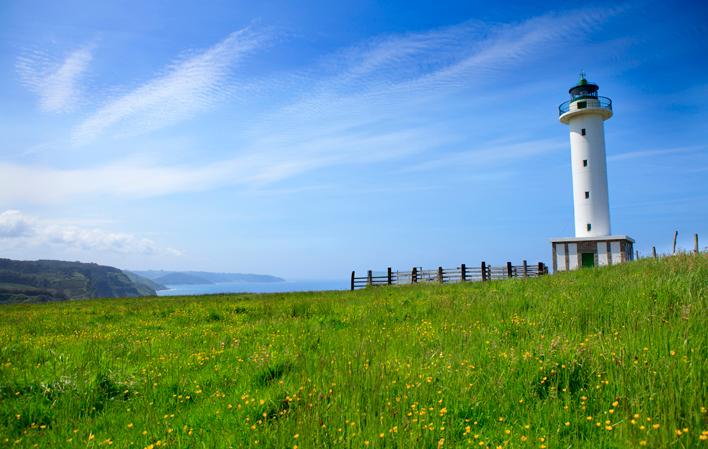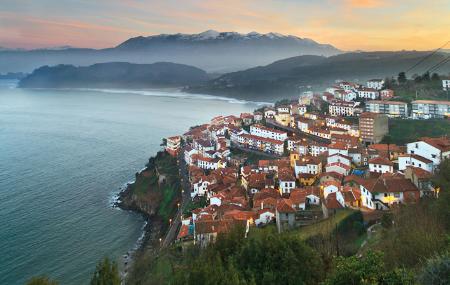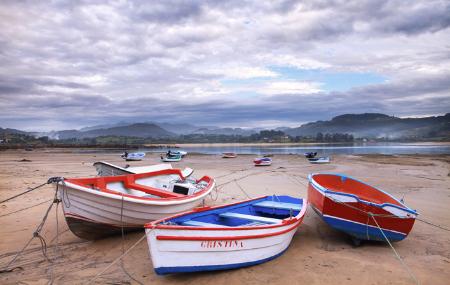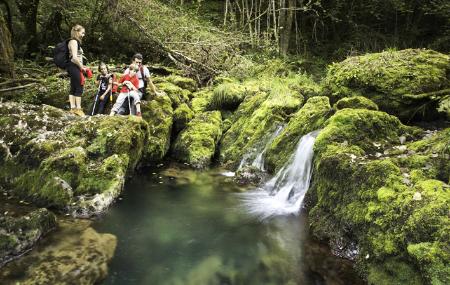
- Address Villaviciosa, Colunga Eastern Asturias
- Distance Distance: 19 kms
- Cars Cars: 2 days
- Start point Start point: Villaviciosa
- Route type Route type: coche
- Layout of the route Layout of the route: Download kml
You only need to let your imagination fly and cast your gaze to where gigantic beings trod millions of years ago.
You only need to let your imagination fly and cast your gaze to where gigantic beings trod millions of years ago. This simple action carries the traveller back through time and space to a coastal land that was then populated by dinosaurs. Villaviciosa and Colunga are two coastal boroughs in eastern Asturian known for their beaches, cider and heritage, but also for the footprints of these prehistoric creatures.
Villaviciosa - Valdediós - Oles - Colunga - Llastres
Day 1: Villaviciosa - El Puntal 35,7
Villaviciosa comprises a charming little town, which combines contemporary architecture with more unique stately buildings. Travellers can start their expedition in this town before heading on to the Dinosaur Trail. The route includes La Ballina Park, the remains of the medieval walls, the birthplace of 19th-century politician, historian and writer José Caveda y Nava, the interior of the marketplace or Los Valdés Mansion. There are no dinosaur footprints in Valdediós, but it deserves a detour to admire the Monastery of San Salvador de Valdediós and "El Conventín" (the small convent), which were built in the 9th century and comprise one of the finest examples of Asturian Pre-Romanesque.
In the afternoon, the tour heads westward from Villaviciosa on the AS-256 to follow the first trail of dinosaur footprints. The first stop is Merón Beach, which you get to by taking the turning to Argüeru. The tracks of a sauropod, consisting of 20 footprints, are preserved on this beach. Back in Villaviciosa, you can take the VV-5 to the famous fishing town of Tazones, where good fish and shellfish are to be enjoyed, and then continue down the secondary road that offers splendid views of Rodiles Beach, Villaviciosa Estuary and El Puntal Harbour.
Day 2: Villaviciosa - Llastres 29,6
The second day of the tour takes you eastward. Colunga is the next borough capital and is accessed via the Autovía del Cantábrico dual carriageway. It has grown around the Church of San Cristobal, the Alonso Covián family home, the marketplace and the Chapel of Santa Ana. This is a good spot to get your strength back before facing the dinosaurs. After a walk through the streets, you need to get into the car and take the AS-257 towards Llastres in order to reach the Jurassic Museum, located on a hill with spectacular views of the coast and structured to enable you to get to know these creatures which became extinct millions of years ago.
With all this information freshly imprinted on your mind, the best place to head for next is La Griega Beach, only a kilometre from the museum, which shelters the first site discovered in Asturias containing the tracks of the world's largest sauropod. The trail begins at an explanatory placard next to the River Llibardón and then leads to the remains.
The final stretch of the tour has Llastres as its destination, a fishing harbour right on the Dinosaur Trail.




